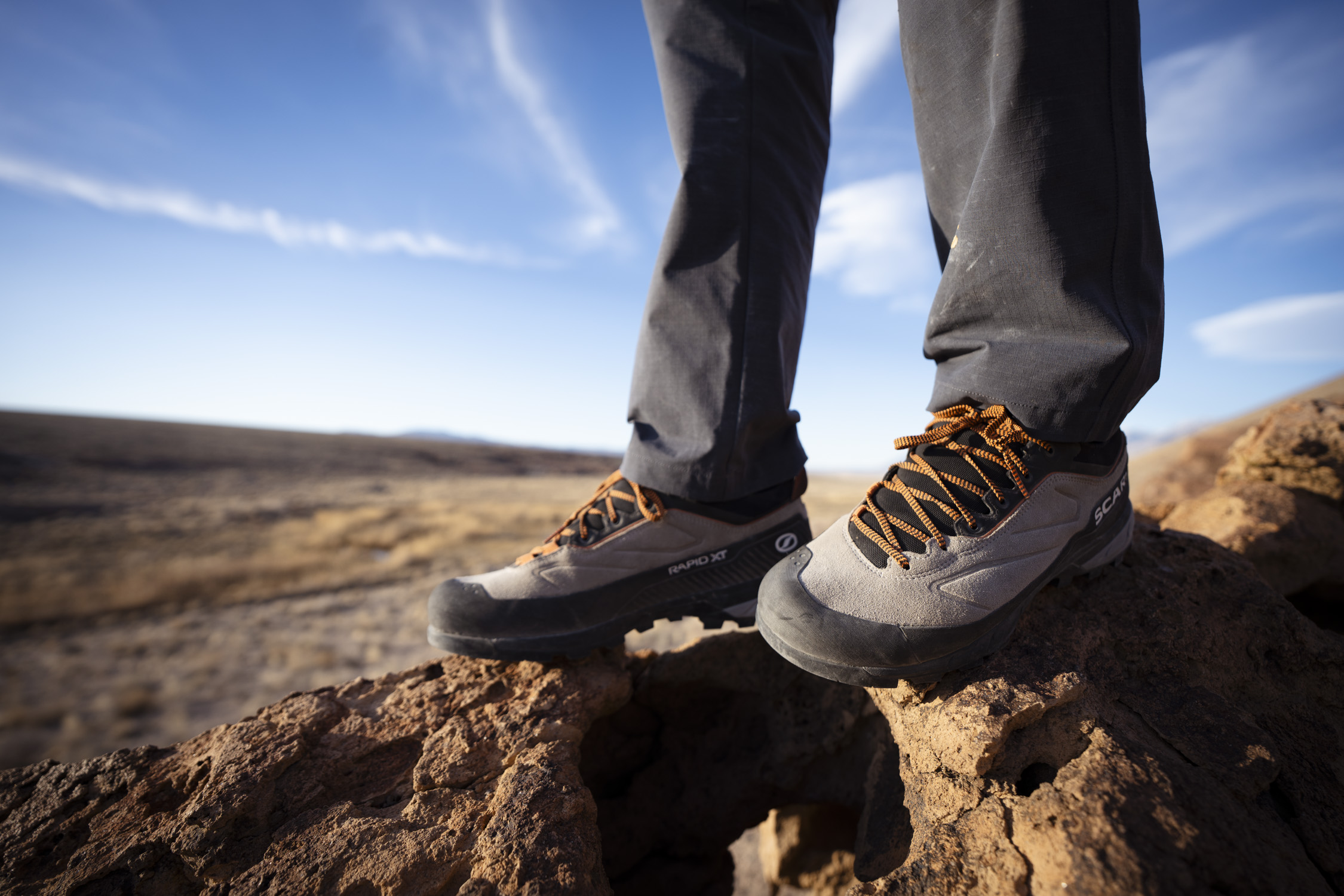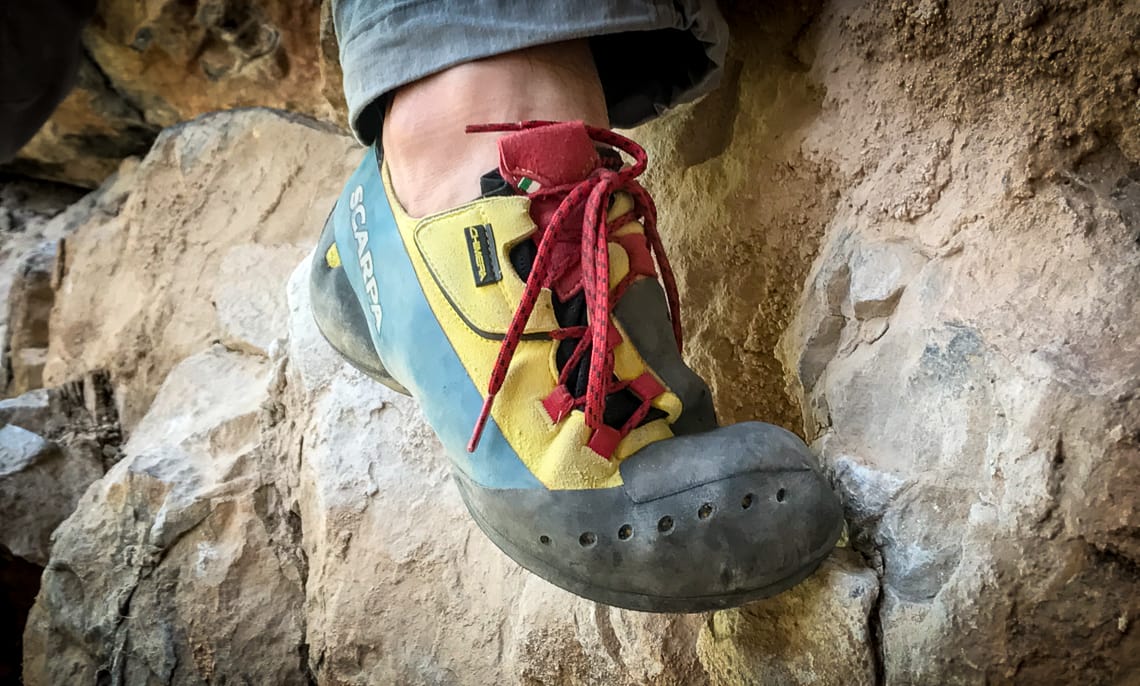Approach Shoes vs Climbing Shoes vs Hiking Boots: Complete Comparison Guide 2025
- Posted on
- 0

Choosing the right footwear for your outdoor adventures can make or break your climbing experience. Whether you're planning a technical multi-pitch route, a casual crag session, or a long approach hike, understanding the differences between approach shoes, climbing shoes, and hiking boots is crucial for both performance and safety. This comprehensive guide breaks down everything you need to know about these three essential types of outdoor footwear.
Understanding the Three Categories of Climbing Footwear
Approach Shoes: The Versatile Middle Ground

Approach shoes represent the perfect compromise between climbing precision and hiking comfort. Originally designed for the approaches to climbing routes—hence the name—these specialized shoes have evolved into versatile outdoor footwear suitable for various activities beyond just getting to the base of a climb.
Key Characteristics:
- Sticky rubber soles with climbing-grade compounds
- Low-profile design for better ground feel
- climbing zone at the forefoot for edging capability
- Durable construction to handle rocky terrain
- Comfortable enough for extended wear
Approach shoes excel in mixed terrain where you need both hiking capability and climbing performance. They're ideal for scrambling, easy climbing pitches, via ferrata routes, and technical approaches where traditional hiking boots would be too clunky and climbing shoes too uncomfortable.
Climbing Shoes: Maximum Performance on Rock

Climbing shoes are purpose-built for vertical movement, prioritizing performance over comfort. These highly specialized shoes feature aggressive designs that maximize your ability to grip small holds and maintain precise foot placement on challenging routes.
Key Characteristics:
- Highly aggressive rubber compounds for maximum friction
- Significant downturn and asymmetric shape
- Tight, performance-oriented fit
- Minimal cushioning or support
- Specialized construction for edging, smearing, and hooking
Climbing shoes are essential for serious rock climbing, bouldering, and sport climbing where precision and grip are paramount. However, their aggressive fit and specialized design make them unsuitable for extended wear or walking on rough terrain.
Hiking Boots: Comfort and Protection First

Hiking boots prioritize comfort, support, and protection over climbing-specific performance. These boots are designed for carrying heavy loads over long distances on varied terrain, from smooth trails to rocky scrambles.
Key Characteristics:
- Generous cushioning and arch support
- Ankle support and protection
- Durable, weather-resistant materials
- Comfortable fit for all-day wear
- Moderate traction suitable for most hiking terrain
While hiking boots excel on traditional hiking trails and provide excellent protection and comfort, they lack the precision and grip needed for technical climbing situations.
Detailed Performance Comparison
Grip and Traction
Climbing Shoes: Superior Rock Performance Climbing shoes use the most advanced rubber compounds available, typically featuring Vibram XS Edge, XS Grip2, or similar high-performance materials. These rubbers provide exceptional friction on rock surfaces, allowing climbers to stand on microscopic holds and maintain grip on steep, smooth surfaces. The aggressive tread patterns and rubber coverage extend over the toe and heel areas for hooking and jamming techniques.
Approach Shoes: Versatile All-Terrain Grip Approach shoes utilize climbing-grade rubber compounds but in a more moderate application. They feature sticky rubber soles that perform well on rock while maintaining enough tread depth for hiking trails. The grip is excellent for scrambling and moderate climbing but doesn't match the precision of dedicated climbing shoes.
Hiking Boots: Trail-Focused Traction Hiking boots typically use harder rubber compounds optimized for durability rather than maximum grip. While adequate for most hiking situations, they lack the friction needed for technical rock surfaces and can feel slippery on smooth stone.
Comfort and Wearability
Hiking Boots: All-Day Comfort Champions Hiking boots win decisively in the comfort category, featuring generous padding, arch support, and roomy toe boxes. They're designed for wearing 8-12 hours per day while carrying heavy packs, making them ideal for long approaches and multi-day adventures.
Approach Shoes: Balanced Comfort Approach shoes offer a comfortable middle ground, providing enough cushioning for several hours of wear while maintaining the sensitivity needed for technical terrain. Most climbers can comfortably wear approach shoes for 4-6 hours, making them perfect for day trips to the crag.
Climbing Shoes: Performance Over Comfort Climbing shoes prioritize performance over comfort, often fitting quite snugly to maximize control and sensitivity. They're typically worn only during actual climbing and removed during rest periods. Extended wear can be uncomfortable or even painful.
Durability and Construction
Hiking Boots: Built to Last Hiking boots are constructed for maximum durability, often featuring leather or synthetic materials designed to withstand thousands of miles of use. Quality hiking boots can last for years of regular use with proper care.
Approach Shoes: Robust Yet Refined Approach shoes balance durability with performance, using materials that can handle rocky approaches while maintaining climbing-specific features. They typically last longer than climbing shoes but may show wear more quickly than hiking boots due to their softer rubber compounds.
Climbing Shoes: Performance-Focused Construction Climbing shoes are built for performance first, with durability being secondary. The soft rubber compounds that provide superior grip tend to wear more quickly, especially on rough rock. However, many climbing shoes can be resoled, extending their useful life significantly.
When to Choose Each Type of Footwear
Choose Approach Shoes When:
- Mixed Terrain Adventures: Your route involves both hiking and easy to moderate climbing
- Technical Approaches: The approach to your climb involves scrambling or short climbing sections
- Via Ferrata Routes: These protected climbing routes are perfect for approach shoes
- Crag Walking: Moving between climbs at developed climbing areas
- Light Scrambling: Class 2-3 terrain where hiking boots feel too clunky
- Multi-Pitch Descents: Walking off long routes where climbing shoes would be uncomfortable
For the best selection of approach shoes for mixed adventures, explore our men's approach shoes and women's approach shoes collections.
Choose Climbing Shoes When:
- Sport Climbing: Bolted routes requiring maximum precision and grip
- Bouldering: Short, powerful problems where every bit of friction matters
- Traditional Climbing: Routes where precise footwork is crucial for safety
- Indoor Climbing: Gym sessions focused on technique development
- Steep Terrain: Any climbing above 5.7 grade where performance is critical
Choose Hiking Boots When:
- Long Distance Hiking: Multi-mile approaches on established trails
- Heavy Pack Carrying: When hauling camping gear or climbing equipment
- Loose Rock Terrain: Situations where ankle protection is important
- Cold Weather Climbing: Insulated boots for alpine or winter conditions
- Multi-Day Adventures: Extended trips where foot comfort is paramount
Sizing and Fit Considerations
Climbing Shoes: Typically sized 1-2 sizes smaller than street shoe size for a performance fit. The shoes should be snug but not painfully tight.
Approach Shoes: Usually sized close to your normal shoe size, perhaps half a size smaller for a more precise fit during technical sections.
Hiking Boots: Often sized half a size larger than street shoes to accommodate thicker socks and foot swelling during long hikes.
Cost Analysis: Investment vs. Performance
Hiking Boots: $200-$400, excellent value for durability and versatility Approach Shoes: $120 -$300, good middle-ground investment for mixed activities
Climbing Shoes: $110 0-$250, variable cost depending on performance level and features
Expert Tips for Multi-Footwear Adventures
Many serious climbers carry multiple types of footwear for different sections of their adventure:
- Wear hiking boots for the initial approach
- Switch to approach shoes for technical approach sections
- Change into climbing shoes for the actual climb
- Use approach shoes for the descent or walk-off
This strategy maximizes comfort and performance throughout the entire adventure, though it does require planning and potentially caching footwear at the base of climbs.
Making Your Decision: Quick Reference Guide
Choose Approach Shoes if: You need one versatile shoe for mixed terrain adventures, prioritize the ability to both hike and climb moderately, and want a good balance of comfort and performance.
Choose Climbing Shoes if: You're focused primarily on climbing performance, need maximum grip and precision, and comfort during extended wear isn't a priority.
Choose Hiking Boots if: Your primary activity is hiking with minimal climbing, you need maximum comfort and support, and you're carrying heavy loads over long distances.
Conclusion: Finding Your Perfect Footwear Match
Understanding the differences between approach shoes, climbing shoes, and hiking boots empowers you to make informed decisions based on your specific adventures and priorities. While each type of footwear excels in particular situations, approach shoes often represent the best compromise for climbers who engage in varied outdoor activities.
For beginners still learning about these differences, our guide on What Are Approach Shoes? The Ultimate Beginner's Guide provides additional foundational knowledge. Advanced users interested in diving deeper into approach shoe varieties should explore What Are the Different Types of Approach Shoes? Technical vs Casual Explained.
Remember that the best footwear choice depends on your specific needs, climbing objectives, and personal preferences. Consider your typical adventures, comfort requirements, and performance priorities when making your selection. With the right footwear, you'll be prepared to tackle any terrain with confidence and comfort.
Browse our complete approach shoes collection to find the perfect balance of climbing performance and hiking comfort for your next adventure.

Comments
Be the first to comment...